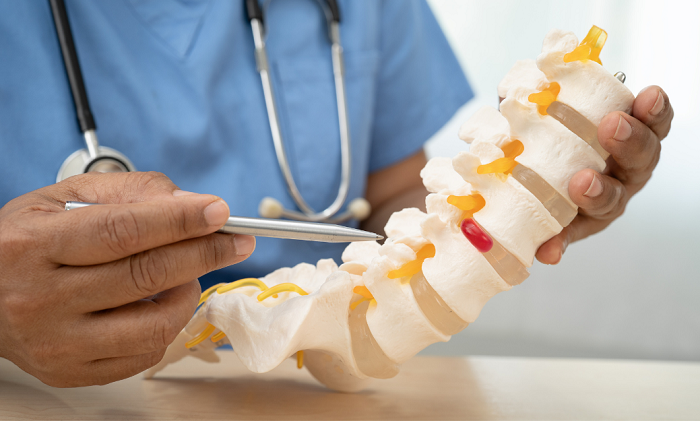Ankylosing Spondylitis (AS) is a chronic inflammatory disease that affects the spine and sacroiliac joint. The inflammation leads to pain and stiffness in the back and buttocks that can progressively worsen. If AS goes unchecked, it can lead to the fusing of the vertebrae, meaning that you lose more and more movement, meaning significant function may be lost and quality of life.
One of the biggest advantages of knowing the early warning signs of disease progression is lasting improvement can be made with early diagnosis and treatment. When diagnosed at an early stage, it can be cured with proper medication, a lifestyle management plan, expert physiotherapy ankylosing spondylitis, and possibly surgery.
Early Signs of Ankylosing Spondylitis
- Persistent Lower Back Pain: A common early symptom of ankylosing spondylitis is persistent lower back pain that can last for months. This pain can be easily confused with any other type of lower back pain, be it a strain or injury. First, the pain from AS typically starts as a gradual onset and tends to worsen during times of inactivity. The second big difference is that AS pain feels notably worse in the morning or after a long period of rest.
- Morning Stiffness: If it is difficult to get out of bed due to stiffness in your neck and lower back, hips or shoulders, this could be an early sign of AS. Morning stiffness lasts longer than 30 minutes, and again, being ready to go when you start to move again is a common sign of the disease. This limitation of flexibility can eventually transmit to the rest of the body, and again, could manifest in the neck or chest region.
- Fatigue and Malaise: Ankylosing spondylitis is considered an inflammatory disease, and many inflammatory conditions can lead to fatigue. Here, it is not about getting tired but about the intense chronic fatigue that doesn’t improve even with rest. If you are someone who feels like you are constantly worn out even if you sleep well, then you should see a healthcare practitioner.
- Declining Mobility: The noticeable mobility loss of your spine—when it’s difficult to bend or twist—could be an indication that your AS is progressing. Some people even feel something similar to a pulling or resistance in their back or hips when they move, which eventually makes simple movements, like brushing your teeth and combing your hair, very cumbersome.
- Pain in Joints: AS is a front spine disease, but it can affect other joints too, including shoulders, hips, knees, and ankles. If there is pain or swelling in these areas—especially if it persists—don’t assume everything will resolve itself. Be engaged with the process of discerning whether or not it requires a diagnosis. If you are experiencing this sort of discomfort, make sure to get a medical examination immediately.

Importance of Early Physiotherapy Intervention
Early diagnosis and treatment are essential for ankylosing spondylitis. One of the most effective management strategies is getting physiotherapy for ankylosing spondylitis. For people living in Delhi NCR, you may want to consider the Physiotherapy Centers in Gurgaon, where the programs are specifically designed for AS patients. Many physiotherapy centers in Gurgaon have rehabilitation plans that are tailored to address each individual specifically.
Frequently Asked Questions
Q1: Can ankylosing spondylitis be cured completely?
A1: No, there is not a cure for ankylosing spondylitis at this point in time. With early recognition and proper early treatment, including physiotherapy, a patient with AS can manage the overall symptoms of the disease.
Q2: Is ankylosing spondylitis hereditary?
A2: Yes, AS does run in families. The HLA-B27 gene is associated with a higher risk for developing AS, but not everyone who has this gene will have AS.
Q3: When should I see a doctor for back pain?
A3: If your back pain lasts longer than three months, begins to impair your quality of life, is worse at rest, or you have morning stiffness, fatigue, or other joint pain, you should see a doctor. The sooner you can get a diagnosis for ankylosing spondylitis, the better.


